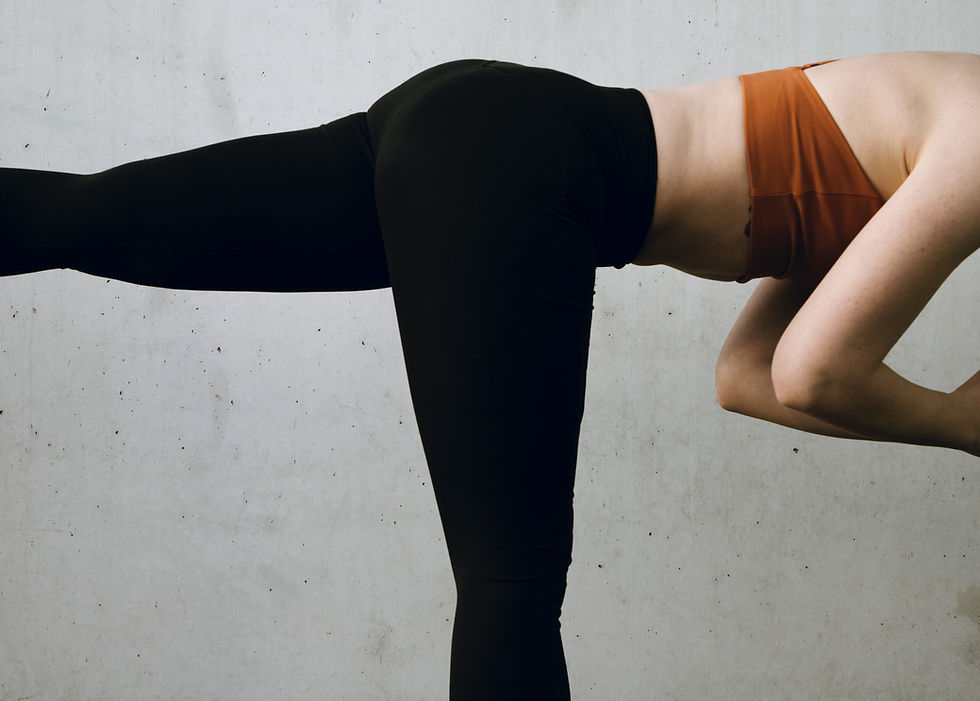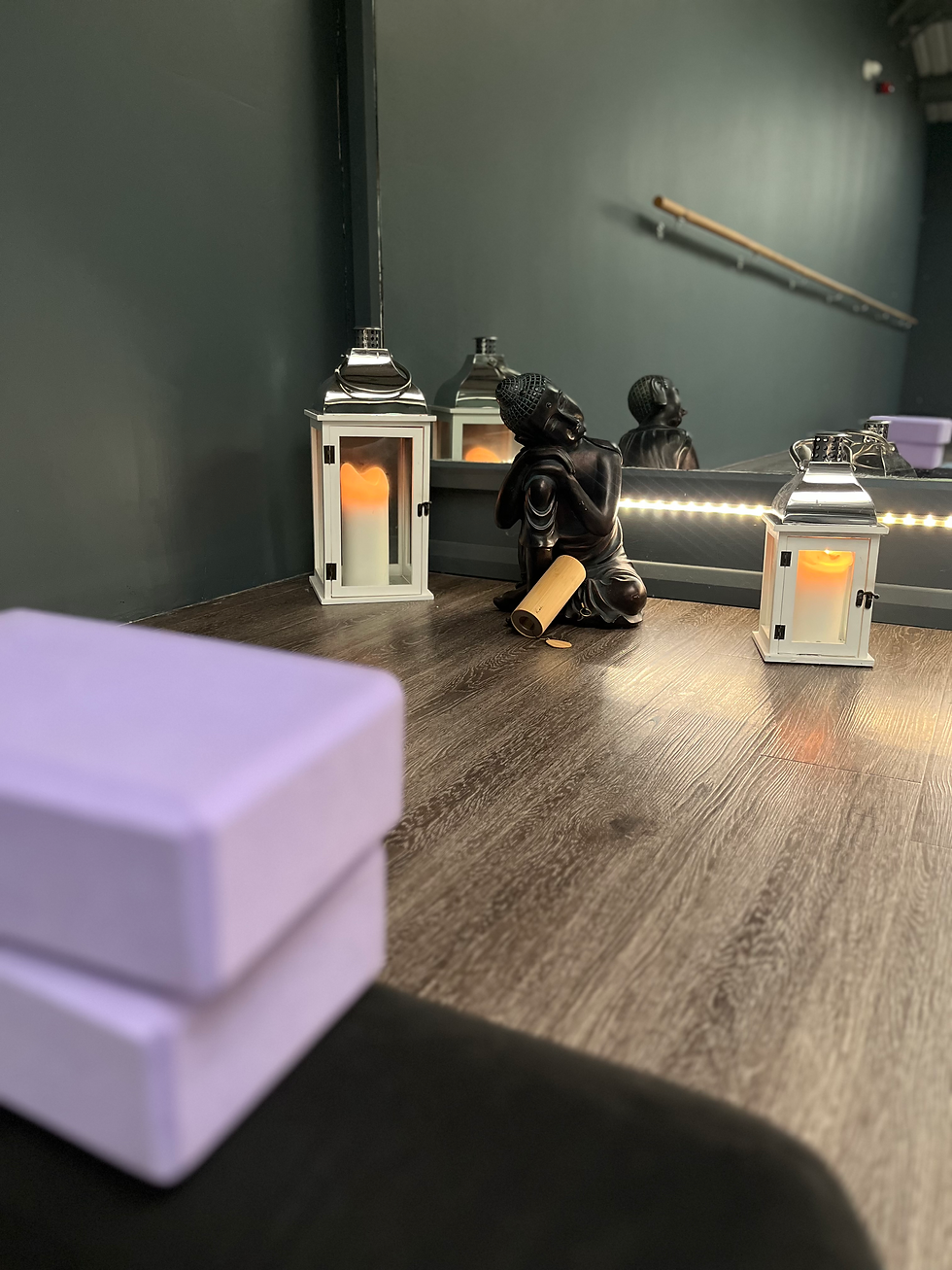Namaste, Om, Drishti: What Yoga Expressions Actually Mean
- Vanessa Flow

- May 27
- 5 min read
If you’ve ever found yourself in a yoga class thinking "what did the teacher just say?”, this one's for you.
Yoga is about connection, not confusion, so we always explain the Sanskrit terms we use in our practice at Vanessa Flow Yoga.
In our latest blog, we're breaking down the most common yoga expressions you’ll hear in class, so you can feel even more confident and present in your practice.

Namaste – a greeting, a bow, a moment of connection
Let's start with a really common one - which some critics would disagree of its use within the western yoga world. We are passionate for you to understand its original meaning so we can respect its origins.
You’ll often hear “namaste” at the end of class, accompanied by a bow of your head with your hands at your heart centre.
“Namaste” comes from Sanskrit and means “I bow to you” and "The divine light in me bows to the divine light in you."
In its traditional Indian context, Namaste is a deeply meaningful gesture of respect used in everyday life.
Within our yoga practice it's a way for us to show our respect for ourselves and each other, sharing a moment of acknowledgement for the experience and to honour the ancient tradition teachings of yoga and all of our inner teachers.
You can say it back or simply soak up the moment – it's completely up to you.
Om – the sound of everything (yes, really!)
Okay, so chanting can feel daunting to some newbie yogas, but let's talk about this one to try and invite you to explore what it's all about.
Sometimes chanted at the beginning or end of a class, Om "Aum" is a sacred sound and a vibration that runs through your entire body.
It's said to represent the sound of the universe, connecting everything together and it’s the most sacred mantra in Hinduism and Tibetan Buddhism, appearing at the start and end of Sanskrit prayers.

A (Ah): Represents the waking state, creation, the beginning.
U (Oo): Represents the dreaming state, preservation, the middle.
M (Mm): Represents the deep sleep state, destruction or transformation, the end.
The Fourth State (Silence): The silence after, a state of pure awareness and bliss.
If it feels a bit weird to say, that's okay - either join in, hum along or just listen and see how you feel.
And remember, nobody is thinking about or noticing what you're doing, so try not to feel self-conscious!
Drishti – finding your focus (aka not falling over)
Have you ever heard a yoga teacher ask you to “find your drishti” during certain yoga poses?
Translated as vision or observation, all drishti means in simple terms is picking a steady point to fix your gaze on to help your balance.

Common when we're attempting balance asanas like tree pose or Warrior III, it's actually not just for the physical act of balancing.
It's also about deepening your focus and drawing your attention back to your breath and body to be more present in your yoga practice.
We can totally acknowledge how easy it is to get wandering eyes, to compare & we believe a strong dristhi can help prevent you from being so focused on everyone else & be on your mat soley for you.
Asana – every pose has a purpose!
You might not realise it, but every movement you make in a yoga class is called an asana (pronounced AH-sah-nah), whatever style of yoga you're practising.
Asana is simply a term for a physical yoga position, pose, or posture and every asana has its own purpose - whether it's to strengthen, ground, energise, or restore.
It's not a competition so don't worry if the person on the next mat has nailed an asana while you’re wobbling around - it's yoga practice, not yoga perfect, and you're here to focus on yourself.
Pranayama – intentional breathing
Breath is the foundation of the practice of yoga, and pranayama is breathing with awareness and control.

Try to avoid thinking yogic breathing is something you can get right or wrong - it’s much more about noticing your breath and using it to calm your mind, energise your body, or prepare for meditation.
At Vanessa Flow Yoga, we sometimes introduce simple pranayama techniques like ujjayi (ocean) breathing or alternate nostril breathing.
These are techniques you can take off the mat and into your everyday life to ground yourself during moments of high stress or anxiety. Our little gift to you!
Savasana – restorative stillness
At the end of every class, your yoga instructor will invite you to settle into your savasana – a asana where you lie flat on your back, arms relaxed, eyes closed.
When we say this is the most important posture, we mean it!

You might feel like you're doing nothing just lying there, but this quiet moment is where everything integrates - and you deserve that moment of relaxation and reflection.
During your savasana, your body gets a chance to absorb the benefits of your practice – the movement, the breath, the intention.
It’s also a rare opportunity in our busy lives to simply be rather than do. Many students say it’s their favourite part of class – and once you’ve tried it, you’ll understand why.
Vinyasa - a flow and transition
"Take a vinyasa if you’d like."
Have you heard this before and been unsure what one is, let alone whether you'd like to take one?
A vinyasa is a short sequence of movements linking your breath with your motion – usually including:
A high plank
A lowering of your body to the ground (chaturanga)
An upward facing dog or a cobra
A downward facing dog.
You'll typically find this statement & movement within our true love of yoga styles, "Vinyasa Flow", which literally means to place in a special way. The best way to think of a vinyasa is as a beautiful transition between poses. It keeps the energy flowing and helps reset the body between sequences.

However, it's optional! You can take one every time, or skip it completely and take a breather in Child’s Pose instead. Always encourage you to listen to your body and do what feels right for you.
Don't panic! You don't need to know any of these common yoga terms to take your first yoga class
Yoga is inclusive to all, so we don’t expect you to turn up as an expert yogi speaking fluent Sanskrit.
Every piece of yoga lingo you hear in our classes will be explained to you, which overtime will become second nature and familiar.
So come along, roll out your mat (or borrow one of ours) and start your journey of relaxation, empowerment and self-discovery.
View our class timetable to book onto your next class or try unlimited yoga for 21 days with our Intro Pass.






Comments